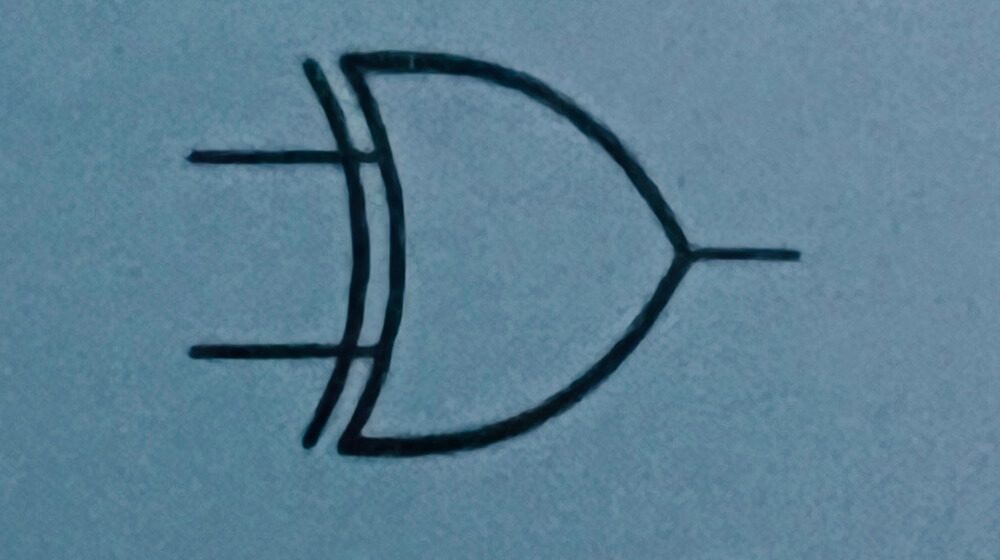Group ‘A’
Select and write in your answer sheet the most appropriate option from the following multiple choice questions. [9 x 1=9]
1. In Boolean algebra, the value of (A+A’) is______.
i) A ii) 0 iii) 1 iv) None
2. In Ms Word, the shortcut key for ‘UNDO’ is________.
i) CTRL + X ii) CTRL + Y iii) CTRL + Z iv) CTRL + C
3. Which level of cache is faster?
i) L2 cache ii) L1 cache iii) L2 cache iv) All options
4. The main technology used in the second generation was______.
i) Transistor ii) ICs iii) AI iv) Vacuum tube
5. The following symbol represents which logic gate?

i) AND ii) NOR iii) XOR iv) X-NOR
6. 2’s complement of (1001)2 is:
i) (0101)2 ii) (0111)2 iii) (1101)2 iv) (1100)2
7. What is the value of (0.11010011)2 in (?)16.
i) (0.D2)16 ii) (0.C2)16 iii) (0.D3)16 iv) (0.D4)16
8. Which one is the primary data type used in C programming?
i) Char ii) Int iii) Float iv) All options
9. GIGO stands for:
i) Garbage In Garbage Out ii) Gap In Gap Out
iii) Get In Get Out iv) None of the options
Group ‘B’
Short answer questions: [5 x 5 = 25]
10. Define a computer system. Explain any four application areas of computer.
‘OR’
Define Octal number system and convert (11011.101)2 into (?)10. [1+2+2]
11. What is primary memory? Write the difference between ROM and RAM. [1+4]
12. Compare the features of 1st and 2nd generations of computers. [2.5+ 2.5]
‘OR’
Define 2’s complement method. Subtract (1001)2 from (110110)2 using 1’s and 2’s complement method. [1+4]
13. Define data types in ‘C’ and write a program to find the sum, product and difference of two input numbers. [1+4]
14. State and prove Associative Law using logic diagram and truth table. [2.5+2.5]
Group ‘C’
Long answer questions: [2 x 8 = 16]
15. Explain computer architecture with block diagram and functions of its components. [8]
‘OR’
Explain different types of secondary memory of computer systems in detail.
16. Explain OR, X-NOR, NAND and NOT gates with logic function, graphical symbol, truth table and Venn diagram. [8]
